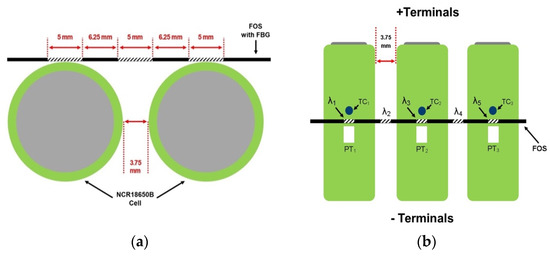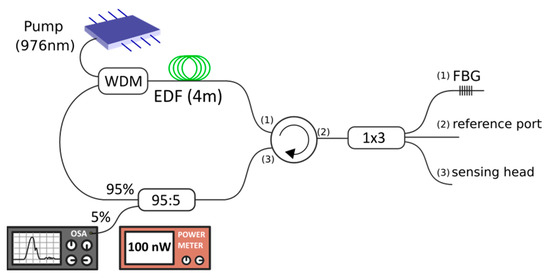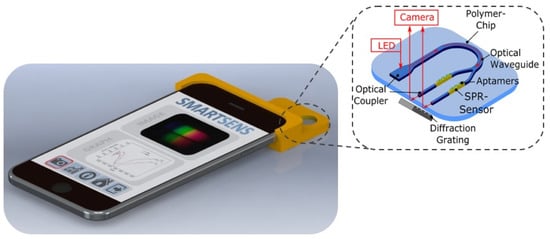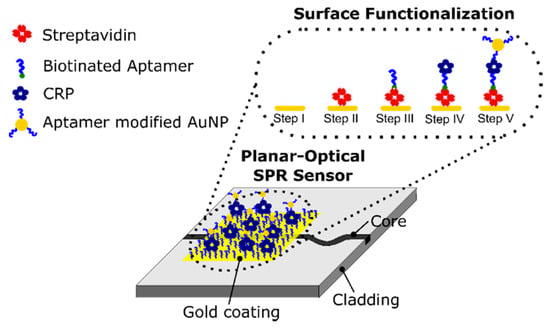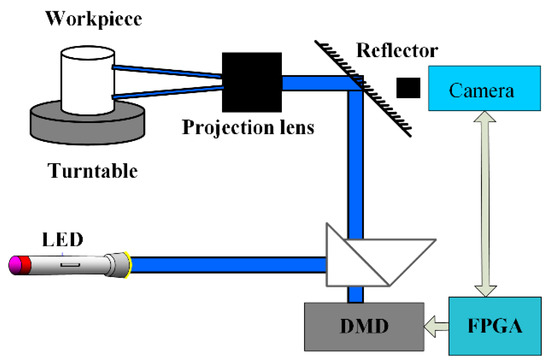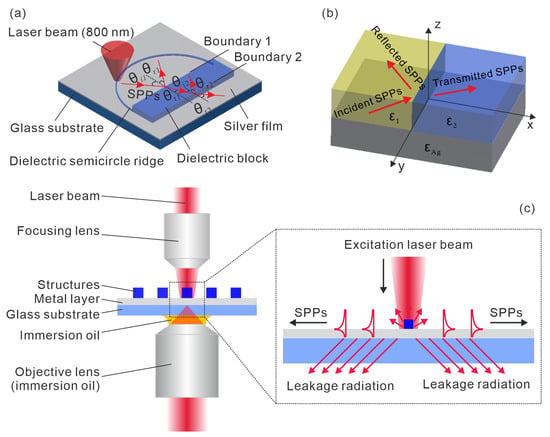Photonic Sensors
(Closed)
A topical collection in Sensors (ISSN 1424-8220). This collection belongs to the section "Optical Sensors".
Viewed by 44152
Share This Topical Collection
Editors
 Prof. Dr. Bernhard Wilhelm Roth
Prof. Dr. Bernhard Wilhelm Roth
 Prof. Dr. Bernhard Wilhelm Roth
Prof. Dr. Bernhard Wilhelm Roth
E-Mail
Website
Collection Editor
Hannover Centre for Optical Technologies (HOT), Gottfried Wilhelm Leibniz Universität, 30167 Hannover, Germany
Interests: laser sensing and spectroscopy; integrated polymer optics; fiber-optical sensing; optical technology for illumination; information; the life sciences; digital holography; fiber couplers; multi-physics optical simulations
Special Issues, Collections and Topics in MDPI journals
 Dr. Kort Bremer
Dr. Kort Bremer
 Dr. Kort Bremer
Dr. Kort Bremer
E-Mail
Website
Collection Editor
Hannover Centre for Optical Technologies (HOT), Gottfried Wilhelm Leibniz Universität, 30167 Hannover, Germany
Interests: fiber-optic sensors; integrated optics; optic design; fiber-optic communication; point-of-care diagnostics
 Dr. Lourdes S. M. Alwis
Dr. Lourdes S. M. Alwis
 Dr. Lourdes S. M. Alwis
Dr. Lourdes S. M. Alwis
E-Mail
Website
Collection Editor
School of Engineering and the Build Environment, Edinburgh Napier University, Edinburgh EH10 5DT, UK
Interests: photonic sensing within the areas of structural health monitoring, chemical sensing, biomedical sensing and wearable technology
Topical Collection Information
Dear Colleagues,
Integrated optics and photonics are major drivers for the development of novel sensor and measurement technology. Miniaturized and highly functional photonic components enable the realization of new and non-invasive sensor concepts with high sensitivity and specificity which open up new avenues for broad application in areas such as process and environmental monitoring, medical diagnostics, or the life sciences, among others. Such systems also meet the demand for resource and cost efficiency, which is considered a key aspect for widely establishing new technologies.
This Topical Collection gives an overview on the worldwide efforts in the field of sensing and measurement technology based on integrated optics and photonics approaches. It illustrates the huge potential and highlights promising research routes. We invite the contribution of articles covering integrated optical and functional sensor systems and measurement technology as well as their application.
Individual topics of interest include, but are not limited to:
- Plasmonic sensor technology;
- Micro- and nanooptics-based sensing;
- Resonant and evanescent field sensing;
- Biosensor technology;
- Fiber-optic sensing;
- Integrated optofluidics;
- Distributed sensing and sensor networks;
- Interconnected sensing;
- Environmental monitoring and analytics;
- Medical optics and diagnostics;
- Digital health monitoring;
- Wearable optical sensors;
- Structural integrity analysis.
Prof. Dr. Bernhard Wilhelm Roth
Dr. Kort Bremer
Dr. Lourdes S. M. Alwis
Collection Editors
Manuscript Submission Information
Manuscripts should be submitted online at www.mdpi.com by registering and logging in to this website. Once you are registered, click here to go to the submission form. Manuscripts can be submitted until the deadline. All submissions that pass pre-check are peer-reviewed. Accepted papers will be published continuously in the journal (as soon as accepted) and will be listed together on the collection website. Research articles, review articles as well as short communications are invited. For planned papers, a title and short abstract (about 100 words) can be sent to the Editorial Office for announcement on this website.
Submitted manuscripts should not have been published previously, nor be under consideration for publication elsewhere (except conference proceedings papers). All manuscripts are thoroughly refereed through a single-blind peer-review process. A guide for authors and other relevant information for submission of manuscripts is available on the Instructions for Authors page. Sensors is an international peer-reviewed open access semimonthly journal published by MDPI.
Please visit the Instructions for Authors page before submitting a manuscript.
The Article Processing Charge (APC) for publication in this open access journal is 2600 CHF (Swiss Francs).
Submitted papers should be well formatted and use good English. Authors may use MDPI's
English editing service prior to publication or during author revisions.
Keywords
- biosensing
- evanescent field sensing
- resonant and interferometric concepts
- multiplexed sensor systems
- integrated optics and photonics
- sensor networks
- remote sensing
Published Papers (11 papers)
Open AccessArticle
A Compensation Method for Nonlinearity Errors in Optical Interferometry
by
Yanlu Li and Emiel Dieussaert
Cited by 1 | Viewed by 1544
Abstract
Optical coherent detection is widely used for highly sensitive sensing applications, but nonlinearity issues pose challenges in accurately interpreting the system outputs. Most existing compensation methods require access to raw measurement data, making them not useful when only demodulated data are available. In
[...] Read more.
Optical coherent detection is widely used for highly sensitive sensing applications, but nonlinearity issues pose challenges in accurately interpreting the system outputs. Most existing compensation methods require access to raw measurement data, making them not useful when only demodulated data are available. In this study, we propose a compensation method designed for direct application to demodulated data, effectively addressing the 1st and 2nd-order nonlinearities in both homodyne and heterodyne systems. The approach involves segmenting the distorted signal, fitting and removing baselines in each section, and averaging the resulting distortions to obtain precise distortion shapes. These shapes are then used to retrieve compensation parameters. Simulation shows that the proposed method can effectively reduce the deviation caused by the nonlinearities without using the raw data. Experimental results from a silicon-photonics-based homodyne laser Doppler vibrometry prove that this method has a similar performance as the conventional Heydemann correction method.
Full article
►▼
Show Figures
Open AccessArticle
Individual Cell-Level Temperature Monitoring of a Lithium-Ion Battery Pack
by
Keith M. Alcock, Álvaro González-Vila, Mustehsan Beg, Francisco Vedreño-Santos, Zuansi Cai, Lourdes S. M. Alwis and Keng Goh
Cited by 4 | Viewed by 3407
Abstract
The work described herein details the deployment of an optical fibre strand with five fibre Bragg grating (FBG) sensors for individual cell-level temperature monitoring of a three-cell lithium-ion battery pack. A polymer guide tube with 3D printed plinths is employed, resulting in high
[...] Read more.
The work described herein details the deployment of an optical fibre strand with five fibre Bragg grating (FBG) sensors for individual cell-level temperature monitoring of a three-cell lithium-ion battery pack. A polymer guide tube with 3D printed plinths is employed, resulting in high precision temperature readings with an average error of 0.97 °C, 1.33 °C, and 1.27 °C for FBG sensors on each battery cell, surpassing traditional thermocouple and platinum resistance sensors in some circumstances. The temperature response of FBGs positioned between battery cells demonstrates that, in addition to sensing temperature at the cell level, temperature data can be effectively acquired between cells, suggesting that FBGs may be used to monitor the heat radiated from individual cells in a battery pack.
Full article
►▼
Show Figures
Open AccessArticle
Ring Cavity Erbium-Doped Fiber for Refractive Index Measurements
by
Rosa Ana Perez-Herrera, Liliana Soares, Susana Silva and Orlando Frazão
Cited by 6 | Viewed by 1813
Abstract
In this study, an interrogation system based on an erbium-doped fiber ring cavity for refractive index measurements is presented and experimentally demonstrated. This cavity ring includes a 1 × 3 coupler wherein one of the fiber output ports is used to increase the
[...] Read more.
In this study, an interrogation system based on an erbium-doped fiber ring cavity for refractive index measurements is presented and experimentally demonstrated. This cavity ring includes a 1 × 3 coupler wherein one of the fiber output ports is used to increase the optical power of the system by means of an FBG used as a reflector. The other two output ports are used as a refractive index sensing head and reference port, respectively. An experimental demonstration of this proposed sensor system for the measurement of a distinct refractive index is presented.
Full article
►▼
Show Figures
Open AccessArticle
Evaluation of Viscosity Dependence of the Critical Meniscus Height with Optical Fiber Sensors
by
Leonardo Binetti, Fraser Simpson and Lourdes S. M. Alwis
Viewed by 3195
Abstract
Conventional means of data extraction using optical fiber interrogators are not adequate for fast-paced detection of a target parameter. In this instance, the relationship between the critical meniscus heights (CMH) of several liquids to the extraction speed of a rod submerged in them,
[...] Read more.
Conventional means of data extraction using optical fiber interrogators are not adequate for fast-paced detection of a target parameter. In this instance, the relationship between the critical meniscus heights (CMH) of several liquids to the extraction speed of a rod submerged in them, have been analyzed. A limitation of a previous interrogator used for the purpose had been light absorption by the liquid due to the used bandwidth of the readily-available light source, i.e., C-band. The newly proposed technique addresses this limitation by utilizing a broadband light source instead, with a Si-photodetector and an Arduino. In addition, the Arduino is capable of extracting data at a relatively faster rate with respect to the conventional optical interrogator. The use of a different operational wavelength (850 nm instead of 1550 nm) increased the r
2 and the sensitivity of the sensor. The new setup can measure surface chemistry properties, with the advantage of being comparatively cheaper than the conventionally available interrogator units, thereby providing a suitable alternative to conventional measurement techniques of liquid surface properties, while reducing material waste, i.e., in terms of the required volume for detection of a target parameter, through the use of optical fiber.
Full article
►▼
Show Figures
Open AccessArticle
Analysis of Embedded Optical Interferometry in Transparent Elastic Grating for Optical Detection of Ultrasonic Waves
by
Chayanisa Sukkasem, Suvicha Sasivimolkul, Phitsini Suvarnaphaet and Suejit Pechprasarn
Cited by 5 | Viewed by 3112
Abstract
In this paper, we propose a theoretical framework to explain how the transparent elastic grating structure can be employed to enhance the mechanical and optical properties for ultrasonic detection. Incident ultrasonic waves can compress the flexible material, where the change in thickness of
[...] Read more.
In this paper, we propose a theoretical framework to explain how the transparent elastic grating structure can be employed to enhance the mechanical and optical properties for ultrasonic detection. Incident ultrasonic waves can compress the flexible material, where the change in thickness of the elastic film can be measured through an optical interferometer. Herein, the polydimethylsiloxane (PDMS) was employed in the design of a thin film grating pattern. The PDMS grating with the grating period shorter than the ultrasound wavelength allowed the ultrasound to be coupled into surface acoustic wave (SAW) mode. The grating gaps provided spaces for the PDMS grating to be compressed when the ultrasound illuminated on it. This grating pattern can provide an embedded thin film based optical interferometer through Fabry–Perot resonant modes. Several optical thin film-based technologies for ultrasonic detection were compared. The proposed elastic grating gave rise to higher sensitivity to ultrasonic detection than a surface plasmon resonance-based sensor, a uniform PDMS thin film, a PDMS sensor with shearing interference, and a conventional Fabry–Perot-based sensor. The PDMS grating achieved the enhancement of sensitivity up to 1.3 × 10
−5 Pa
−1 and figure of merit of 1.4 × 10
−5 Pa
−1 which were higher than those of conventional Fabry–Perot structure by 7 times and 4 times, respectively.
Full article
►▼
Show Figures
Open AccessArticle
All-Optical Planar Polymer Waveguide-Based Biosensor Chip Designed for Smartphone-Assisted Detection of Vitamin D
by
Johanna-Gabriela Walter, Lourdes S. M. Alwis, Bernhard Roth and Kort Bremer
Cited by 33 | Viewed by 5009
Abstract
An all-optical plasmonic sensor platform designed for smartphones based on planar-optical waveguide structures integrated in a polymer chip is reported for the first time. To demonstrate the applicability of the sensor system for biosensing purposes, the detection of 25-hydroxyvitamin D (25OHD) in human
[...] Read more.
An all-optical plasmonic sensor platform designed for smartphones based on planar-optical waveguide structures integrated in a polymer chip is reported for the first time. To demonstrate the applicability of the sensor system for biosensing purposes, the detection of 25-hydroxyvitamin D (25OHD) in human serum samples using an AuNP-enhanced aptamer-based assay was demonstrated. With the aid of the developed assay sensitivity of 0.752 pixel/nM was achieved for 25OHD concentrations ranging from 0–100 nM. The waveguide structure of the sensor enables miniaturisation and parallelisation, thus, demonstrates the potential for simultaneous detection of various analytes including biomarkers. The entire optical arrangement can be integrated into a single polymer chip which allows for large scale and cost-efficient sensor fabrication. The broad utilization and access of smartphone electronics make the proposed design most attractive for its wider use in lab-on-chip applications.
Full article
►▼
Show Figures
Open AccessEditor’s ChoiceArticle
SPR Biosensor Based on Polymer Multi-Mode Optical Waveguide and Nanoparticle Signal Enhancement
by
Johanna-Gabriela Walter, Alina Eilers, Lourdes Shanika Malindi Alwis, Bernhard Wilhelm Roth and Kort Bremer
Cited by 52 | Viewed by 6571
Abstract
We present a surface plasmon resonance (SPR) biosensor that is based on a planar-optical multi-mode (MM) polymer waveguide structure applied for the detection of biomolecules in the lower nano-molar (nM) range. The basic sensor shows a sensitivity of 608.6 nm/RIU when exposed to
[...] Read more.
We present a surface plasmon resonance (SPR) biosensor that is based on a planar-optical multi-mode (MM) polymer waveguide structure applied for the detection of biomolecules in the lower nano-molar (nM) range. The basic sensor shows a sensitivity of 608.6 nm/RIU when exposed to refractive index changes with a measurement resolution of 4.3 × 10
−3 RIU. By combining the SPR sensor with an aptamer-functionalized, gold-nanoparticle (AuNP)-enhanced sandwich assay, the detection of C-reactive protein (CRP) in a buffer solution was achieved with a response of 0.118 nm/nM. Due to the multi-mode polymer waveguide structure and the simple concept, the reported biosensor is well suited for low-cost disposable lab-on-a-chip applications and can be used with rather simple and economic devices. In particular, the sensor offers the potential for fast and multiplexed detection of several biomarkers on a single integrated platform.
Full article
►▼
Show Figures
Open AccessArticle
Smooth Surface Visual Imaging Method for Eliminating High Reflection Disturbance
by
Wei Shao, Kaibin Liu, Yunqiu Shao and Awei Zhou
Cited by 7 | Viewed by 2742
Abstract
At present, visual imaging is widely applied for surface defects such as bumps and scratches in the manufacture of precise parts with a highly reflective surface. However, the high light reflection and halo disturbance as a result of the illumination in visual imaging
[...] Read more.
At present, visual imaging is widely applied for surface defects such as bumps and scratches in the manufacture of precise parts with a highly reflective surface. However, the high light reflection and halo disturbance as a result of the illumination in visual imaging exert a direct influence on the accuracy of defect detection. In this regard, the present paper develops an adaptive illumination method based on space–time modulation for a visual imaging system. Furthermore, a digital micro-mirror device (DMD) is employed to realize the pixel-level spatiotemporal modulation of illumination. Then, in combination with the illumination intensity feedback of charge coupled device (CCD), the time-space ratio is adjusted automatically to achieve adaptive uniform illumination and effectively suppress the high light reflection and halo disturbance of highly reflective surfaces. The experimental results show that, in terms of restraining high light disturbance, the visibility and accuracy of visual imaging are improved.
Full article
►▼
Show Figures
Open AccessArticle
Experimental Demonstration of Surface Plasmon Polaritons Reflection and Transmission Effects
by
Lei Zheng, Urs Zywietz, Andrey Evlyukhin, Bernhard Roth, Ludger Overmeyer and Carsten Reinhardt
Cited by 15 | Viewed by 5045
Abstract
Special integrated photonic surface structures composed of a dielectric semicircle ridge and a dielectric block placed on a metal substrate are proposed for the investigation of surface plasmon polariton (SPP) reflection and transmission effects. A fabrication method called microscope projection photolithography was employed
[...] Read more.
Special integrated photonic surface structures composed of a dielectric semicircle ridge and a dielectric block placed on a metal substrate are proposed for the investigation of surface plasmon polariton (SPP) reflection and transmission effects. A fabrication method called microscope projection photolithography was employed for the preparation of the structures. Leakage radiation microscopy was applied for the excitation and observation of surface plasmon polaritons (SPPs). It was observed that SPPs exhibit a remarkable decrease in intensity when impinging onto the rectangular dielectric block. Nevertheless, the transmitted wave out of the dielectric block was always observable. The propagation behavior of both the reflected waves at two boundaries (air/dielectric and dielectric/air) and the transmitted wave inside the dielectric block were demonstrated for different SPP incident conditions. The variation of the angles of reflection and transmission with respect to the incident angle was analytically and experimentally investigated. An agreement between the calculated results and the experimental results was obtained. Our findings might allow for novel applications in sensing and analytics once the structures will be functionalized.
Full article
►▼
Show Figures
Open AccessArticle
Fabrication of a Monolithic Lab-on-a-Chip Platform with Integrated Hydrogel Waveguides for Chemical Sensing
by
Maria Leilani Torres-Mapa, Manmeet Singh, Olga Simon, Jose Louise Mapa, Manan Machida, Axel Günther, Bernhard Roth, Dag Heinemann, Mitsuhiro Terakawa and Alexander Heisterkamp
Cited by 31 | Viewed by 5766
Abstract
Hydrogel waveguides have found increased use for variety of applications where biocompatibility and flexibility are important. In this work, we demonstrate the use of polyethylene glycol diacrylate (PEGDA) waveguides to realize a monolithic lab-on-a-chip device. We performed a comprehensive study on the swelling
[...] Read more.
Hydrogel waveguides have found increased use for variety of applications where biocompatibility and flexibility are important. In this work, we demonstrate the use of polyethylene glycol diacrylate (PEGDA) waveguides to realize a monolithic lab-on-a-chip device. We performed a comprehensive study on the swelling and optical properties for different chain lengths and concentrations in order to realize an integrated biocompatible waveguide in a microfluidic device for chemical sensing. Waveguiding properties of PEGDA hydrogel were used to guide excitation light into a microfluidic channel to measure the fluorescence emission profile of rhodamine 6G as well as collect the fluorescence signal from the same device. Overall, this work shows the potential of hydrogel waveguides to facilitate delivery and collection of optical signals for potential use in wearable and implantable lab-on-a-chip devices.
Full article
►▼
Show Figures
Open AccessArticle
Ultrathin Tunable Lens Based on Boundary Tension Effect
by
Ao Yang, Jie Cao, Fanghua Zhang, Yang Cheng and Qun Hao
Cited by 5 | Viewed by 3135
Abstract
Solid and liquid lenses are commonly used in optical design. Such lenses have suitable thicknesses due to their working principle and processing mode. Thus, zoom optical systems comprising solid and liquid lenses are extremely large. This work presents a new ultrathin tunable lens
[...] Read more.
Solid and liquid lenses are commonly used in optical design. Such lenses have suitable thicknesses due to their working principle and processing mode. Thus, zoom optical systems comprising solid and liquid lenses are extremely large. This work presents a new ultrathin tunable lens (UTL) comprising two liquid film lenses (LFLs) obtained through aspheric deformation and produced from the surface of a micro-liquid under gravity and boundary tension. The UTL can flexibly change focal lengths between positive and negative lenses when the device thickness is merely 2.15 mm. The proposed lens has the advantages of small volume, light weight, simple fabrication, and independence from external force during zooming. This research makes up for the drawback that traditional solid and liquid lenses cannot further reduce their thicknesses. The proposed UTL provides a new lens form and fabrication method, and can be used to replace solid and liquid lenses for designing miniature zoom optical systems.
Full article
►▼
Show Figures









